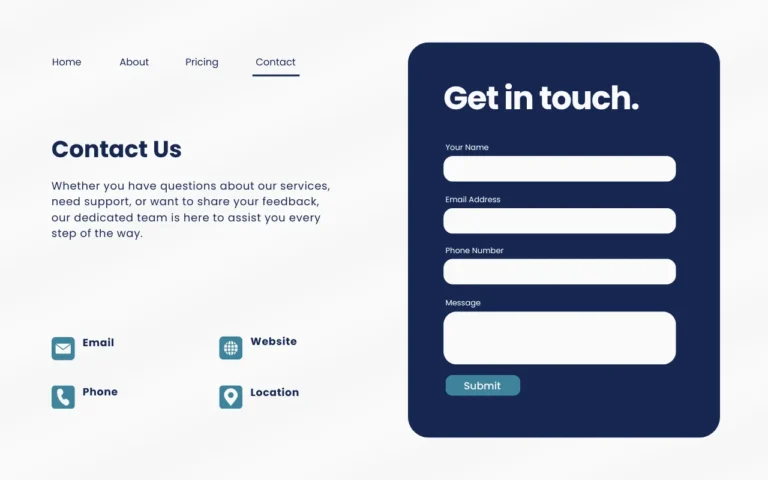In the present advanced world, online security is of principal significance. Programmers are continually developing their procedures to take advantage of weaknesses and gain unapproved admittance to individual and delicate data. Understanding the normal hacking methods utilized by cybercriminals can assist you with safeguarding yourself and your web-based life.
In this article, we will investigate the top 10 common hacking techniques utilized by programmers to take advantage of clueless clients.
1. Phishing Assaults
Phishing is one of the most predominant hacking procedures utilized by cybercriminals. It includes making counterfeit sites or messages that copy authentic ones to fool clients into uncovering delicate data, for example, passwords, Mastercard subtleties, or government backed retirement numbers. Phishing assaults frequently utilize social designing strategies to maneuver clients toward tapping on malevolent connections or giving secret data.
2. Malware Contaminations
Malware, short for malignant programming, alludes to any product intended to damage or acquire unapproved admittance to a PC framework. Programmers utilize different kinds of malware, including infections, worms, Trojans, and ransomware, to think twice about security of online clients. These vindictive projects can be spread through tainted sites, email connections, or compromised programming, and once introduced, they can take delicate information, degenerate documents, or award remote admittance to the aggressor.
3. Secret phrase Assaults
Secret key assaults include hacking methods that target frail or compromised passwords to acquire unapproved admittance to accounts. Programmers utilize techniques, for example, savage power assaults, word reference assaults, or keyloggers to break passwords. It is significant to utilize solid, remarkable passwords for each internet based account and empower two-factor confirmation (2FA) at whatever point conceivable to moderate the gamble of secret word assaults.
4. SQL Infusion
SQL infusion is a hacking strategy pointed toward taking advantage of weaknesses in web applications that utilization data sets. By embedding noxious SQL code into a site’s feedback fields, programmers can control or recover delicate information from the fundamental data set. This method can prompt unapproved access, information breaks, or even the total split the difference of a web application.
5. Man-in-the-Center (MITM) Assaults
Man-in-the-Center assaults include blocking correspondence between two gatherings without their insight. Programmers position themselves between the client and the objective, permitting them to listen in on delicate data, change information, or infuse their pernicious code into the correspondence stream. MITM goes after frequently happen in unstable public Wi-Fi organizations or through compromised switches.
6. Disavowal (Denial of Service) of Administration (DoS) Assaults
Refusal of Administration assaults intend to disturb the accessibility of a designated framework or organization by overpowering it with unnecessary traffic or asset utilization. Programmers use botnets, organizations of compromised PCs, to flood an objective with a staggering measure of solicitations, delivering it incapable to serve real clients. DoS assaults can disable internet based administrations, causing monetary misfortunes and reputational harm.
7. Cross-Site Prearranging (XSS) Assaults
Cross-Webpage Prearranging assaults exploit weaknesses in web applications to infuse malignant contents into confided in sites. When clueless clients visit these compromised sites, the pernicious content executes on their programs, permitting programmers to take delicate data, for example, login qualifications or meeting treats. XSS assaults are regularly used to spread malware, ruin sites, or send off phishing efforts.
8. Social Designing
Social designing methods exploit human brain research to maneuver people toward uncovering delicate data or playing out specific activities. Programmers use strategies like pantomime, pretexting, or teasing to acquire the trust of their casualties. By acting like reliable substances or taking advantage of human feelings, programmers stunt clients into uncovering passwords, banking subtleties, or other classified data.
9. Zero-Day Exploits
Zero-day takes advantage of target obscure weaknesses in programming or working frameworks before engineers get an opportunity to fix them. Programmers find these weaknesses and foster endeavor code to acquire unapproved admittance to frameworks. Zero-day takes advantage of represent a critical danger as they leave clients helpless until a fix is delivered. Staying up with the latest with the most recent security patches can assist with relieving this gamble.
10. Email Caricaturing
Email caricaturing includes producing the shipper’s location to cause an email to show up as though it came from a confided in source. Programmers use email parodying to delude beneficiaries into tapping on pernicious connections, downloading malware-contaminated connections, or uncovering delicate data. It is pivotal to examine email messages, check for indications of parodying, (for example, incorrectly spelled source addresses or dubious substance), and confirm the credibility of messages prior to making any move.
Conclusion
Consciousness of the top 10 common hacking techniques utilized by cybercriminals is fundamental to safeguard yourself and your web-based life. By understanding phishing assaults, malware contaminations, secret phrase weaknesses, SQL infusions, and other hacking strategies, you can go to proactive lengths to improve your internet based security. Consistently refreshing programming, major areas of strength for utilizing, empowering two-factor confirmation, and being mindful of dubious messages and sites are fundamental stages to protect your computerized presence. Keep in mind, the best safeguard against programmers is information and watchfulness. Remain informed, remain secure.










